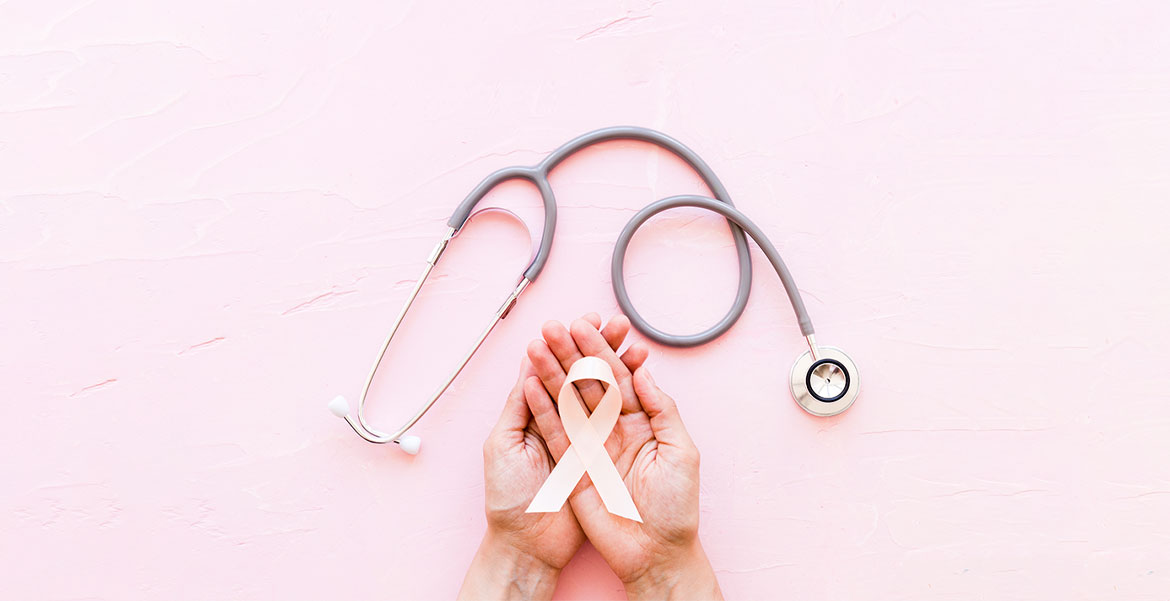Common Cancers and the Symptoms
Cancer is a disease in which some of the body’s cells grow uncontrollably and spread. The origin of the cancer can be anywhere, spreading to other parts of the body.
According to, https://www.narayanahealth.org/cancer/, Cancer is broadly of 3 types:
1. Carcinomas (70%): arise in membranes (coverings) and glands/ ducts of glands. It’s the most common type of cancer, usually spreading to neighboring sites and then to distant sites. Important sites include head-neck, lung, prostate, breast, esophagus, colorectal and anus.
2. Sarcomas (10-20%): Arise from bone/muscle/nerve. It’s less common and spreads to distant sites early.
3. Blood cancers: Leukemia, Lymphoma & Myeloma.
Few common cancers are:
1. Lung Cancer
2. Melanoma
3. Non-Hodgkin Lymphoma
4. Pancreatic Cancer
5. Prostate Cancer
6. Thyroid Cancer
7. Bladder Cancer
8. Breast Cancer
9. Colon and Rectal Cancer
10. Endometrial Cancer
11. Kidney Cancer
12. Leukemia
13. Liver
Let’s look at the symptoms that one might end up showing when affected with a specific type of cancer:
1. Lung cancer- It’s the cancer that originates in the lungs and has the capacity to spread to surrounding areas in the body.
Two major types of lung cancer are:
1. Non-small cell lung cancer
2. Small cell lung cancer
Few common causes are:
● A cough that does not go away or gets worse
● Coughing blood or rust-colored sputum (spit or phlegm)
● Chest pain that is often worse with deep breathing, coughing or laughing
● Hoarseness
● Loss of appetite
● Unexplained weight loss
● Shortness of breath
● Feeling tired or weak
● Infections such as bronchitis and pneumonia that won’t go away or keep coming back
● New onset of wheezing
● Melanoma- The most serious type of skin cancer. Melanoma occurs when the pigment producing cells that give color to the skin become cancerous.
Symptoms that you should look out for:
● A sore that doesn’t heal
● Spread of pigment from the border of a spot into surrounding skin
● Redness or a new swelling beyond the border a the mole
● Change in sensation, such as itchiness, tenderness or pain
● Change in the surface of a mole – scaliness, oozing, bleeding or the appearance of a lump or bump
2. Non-Hodgkin’s Lymphoma: Cancer that starts in the lymphatic system. The condition occurs when the body produces a large number of abnormal lymphocytes, a type of white blood cell.
Signs and symptoms of Non-Hodgkin’s Lymphoma may include:
● Swollen lymph nodes in your neck, armpits or groin
● Abdominal pain or swelling
● Chest pain, coughing or trouble breathing
● Persistent fatigue
● Fever
● Night sweats
● Unexplained weight loss
3. Pancreatic Cancer: Cancer that begins in the organ lying behind the lower part of the stomach (pancreas). The pancreas secretes enzymes that aid digestion and hormones that help regulate the metabolism of sugars. This type of cancer is often detected late, spreads rapidly and has a poor prognosis.
Signs and symptoms of pancreatic cancer often don’t occur until the disease is advanced. They may include:
● Abdominal pain that radiates to your back
● Loss of appetite or unintended weight loss
● Yellowing of your skin and the whites of your eyes (jaundice)
● Light-colored stools
● Dark-colored urine
● Itchy skin
● New diagnosis of diabetes or existing diabetes that’s becoming more difficult to control
● Blood clots
● Fatigue
4. Prostate Cancer: A cancer in a man’s prostate, a small walnut-sized gland that produces seminal fluid.
Prostate cancer that’s more advanced may cause signs and symptoms such as:
● Trouble urinating
● Decreased force in the stream of urine
● Blood in the urine
● Blood in the semen
● Bone pain
● Losing weight without trying
● Erectile dysfunction
5. Thyroid Cancer: A cancer of the thyroid, the butterfly-shaped gland at the base of the neck. The cause of thyroid cancer is poorly understood, but may involve a combination of genetic and environmental factors.
Thyroid cancer typically doesn’t cause any signs or symptoms early in the disease. As thyroid cancer grows, it may cause:
● A lump (nodule) that can be felt through the skin on your neck
● Changes to your voice, including increasing hoarseness
● Difficulty swallowing
● Pain in your neck and throat
● Swollen lymph nodes in your neck
6. Bladder cancer: Cancer that begins in the bladder. This cancer typically affects older adults. It’s usually diagnosed early, when it’s still treatable. It’s likely to recur, so follow-up tests are typically recommended.
Bladder cancer signs and symptoms may include:
● Blood in urine (hematuria), which may cause urine to appear bright red or cola colored, though sometimes the urine appears normal and blood is detected in a lab test
● Frequent urination
● Painful urination
● Back pain
7. Breast cancer: Breast cancer is a disease in which cells in the breast grow out of control. There are different kinds of breast cancer. The kind of breast cancer depends on which cells in the breast turn malignant.
The most common types are:
● Invasive Ductal Carcinoma. The cancer cells grow outside the ducts into other parts of the breast tissue. Invasive cancer cells can also spread, or metastasize to other parts of the body.
● Invasive Lobular Carcinoma. Cancer cells spread from the lobules to the breast tissues that are close by. These invasive cancer cells can also spread to other parts of the body.
Some warning signs of breast cancer are:
● New lump in the breast or underarm (armpit)
● Thickening or swelling of part of the breast
● Irritation or dimpling of breast skin
● Redness or flaky skin in the nipple area or the breast
● Pulling in of the nipple or pain in the nipple area
● Nipple discharge other than breast milk, including blood
● Any change in the size or the shape of the breast
● Pain in any area of the breast
Keep in mind that these symptoms can happen with other conditions that are not cancer.
Doctors are increasingly using genetic information about breast cancer cells to categorize breast cancers. These groups help guide decisions about which treatments are best. Breast cancer groups include:
● Group 1 (luminal A). This group includes tumors that are ER positive and PR positive, but negative for HER2. Luminal A breast cancers are likely to benefit from hormone therapy and may also benefit from chemotherapy.
● Group 2 (luminal B). This type includes tumors that are ER positive, PR negative and HER2 positive. Luminal B breast cancers are likely to benefit from chemotherapy and may benefit from hormone therapy and treatment targeted to HER2.
● Group 3 (HER2 positive). This type includes tumors that are ER negative and PR negative, but HER2 positive. HER2 breast cancers are likely to benefit from chemotherapy and treatment targeted to HER2.
● Group 4 (basal-like). This type, which is also called triple-negative breast cancer, includes tumors that are ER negative, PR negative and HER2 negative. Basal-like breast cancers are likely to benefit from chemotherapy.
9. Colon and Rectal Cancer: A cancer of the colon or rectum, located at the digestive tract’s lower end.
Early cases can begin as non-cancerous polyps. These often have no symptoms but can be detected by screening. For this reason, doctors recommend screenings for those at high risk or over the age of 50.
Colorectal cancer symptoms depend on the size and location of the cancer.
Colorectal cancer may not cause symptoms in the early stages. If it does, they may include:
● Changes in bowel habits
● Diarrhea or constipation
● A feeling that the bowel does not empty properly
● Blood in feces that makes it look dark brown or black
● Bright red blood from the rectum
● Abdominal pain and bloating
● Feeling full, even when a long time has passed since a meal
● Fatigue or tiredness
● Unexplained weight loss
● Anemia
10. Endometrial Cancer: A type of cancer that begins in the lining of the womb (uterus). Most cases occur in women after the age of 55. A key sign is abnormal vaginal bleeding, such as bleeding after menopause or bleeding between periods.
Signs and symptoms of endometrial cancer may include:
● Vaginal bleeding after menopause
● Bleeding between periods
● Pelvic pain
11. Kidney Cancer: Kidney cancer is cancer that begins in the kidneys. Your kidneys are two bean-shaped organs, each about the size of your fist. They’re located behind your abdominal organs, with one kidney on each side of your spine.
Kidney cancer usually doesn’t have signs or symptoms in its early stages. In time, signs and symptoms may develop, including:
● Blood in your urine, which may appear pink, red or cola colored
● Pain in your back or side that doesn’t go away
● Loss of appetite
● Unexplained weight loss
● Tiredness
● Fever
12. Leukemia: A cancer of blood-forming tissues, hindering the body’s ability to fight infection. Leukemia is cancer of blood-forming tissues, including bone marrow.
Types:
● Acute Lymphoblastic Leukemia,
● Acute Myeloid Leukemia
● Chronic Lymphocytic Leukemia
Many patients with slow-growing types of leukemia don’t have symptoms.
You might not notice any signs in the early stages of some forms. When you do have symptoms, they may include:
● Weakness or fatigue
● Bruising or bleeding easily
● Fever or chills
● Infections that are severe or keep coming back
● Pain in your bones or joints
● Headaches
● Vomiting
● Seizures
● Weight loss
● Night sweats
● Shortness of breath
● Swollen lymph nodes or organs like your spleen
13. Liver Cancer: Cancer that origins in the cells of the liver.
Liver cancer can be classified in two ways.
● Primary liver cancer is one that starts in the tissue of the liver. The most common type of primary liver cancer is called Hepatocellular Carcinoma. The number of cases of primary liver cancer in the United States has been increasing over the years.
● Secondary liver cancer is cancer that started in some other part in the body and moved to the liver. This type is also called Metastatic Liver Cancer.
Liver cancer may cause the following symptoms:
● Jaundice, where the skin and eyes become yellow
● Abdominal pain
● Pain close to the right shoulder blade
● Unexplained weight loss
● An enlarged liver, spleen or both
● Swelling in the abdomen or fluid buildup
● Fatigue
● Nausea
● Vomiting
● Back pain
● Itching
● Fever
● A full feeling after a small meal
Tags: Cancer, types of cancer, carcinomas, sarcoma, blood cancer, Lung Cancer, Melanoma, Non-Hodgkin Lymphoma, Pancreatic Cancer, Prostate Cancer, Thyroid Cancer, Bladder Cancer, Breast Cancer, Colon and Rectal Cancer, Endometrial Cancer, Kidney Cancer, Leukemia, Liver cancer, estrogen and progesterone receptor positive breast cancer, her2 negative breast cancer, her2 positive breast cancer









